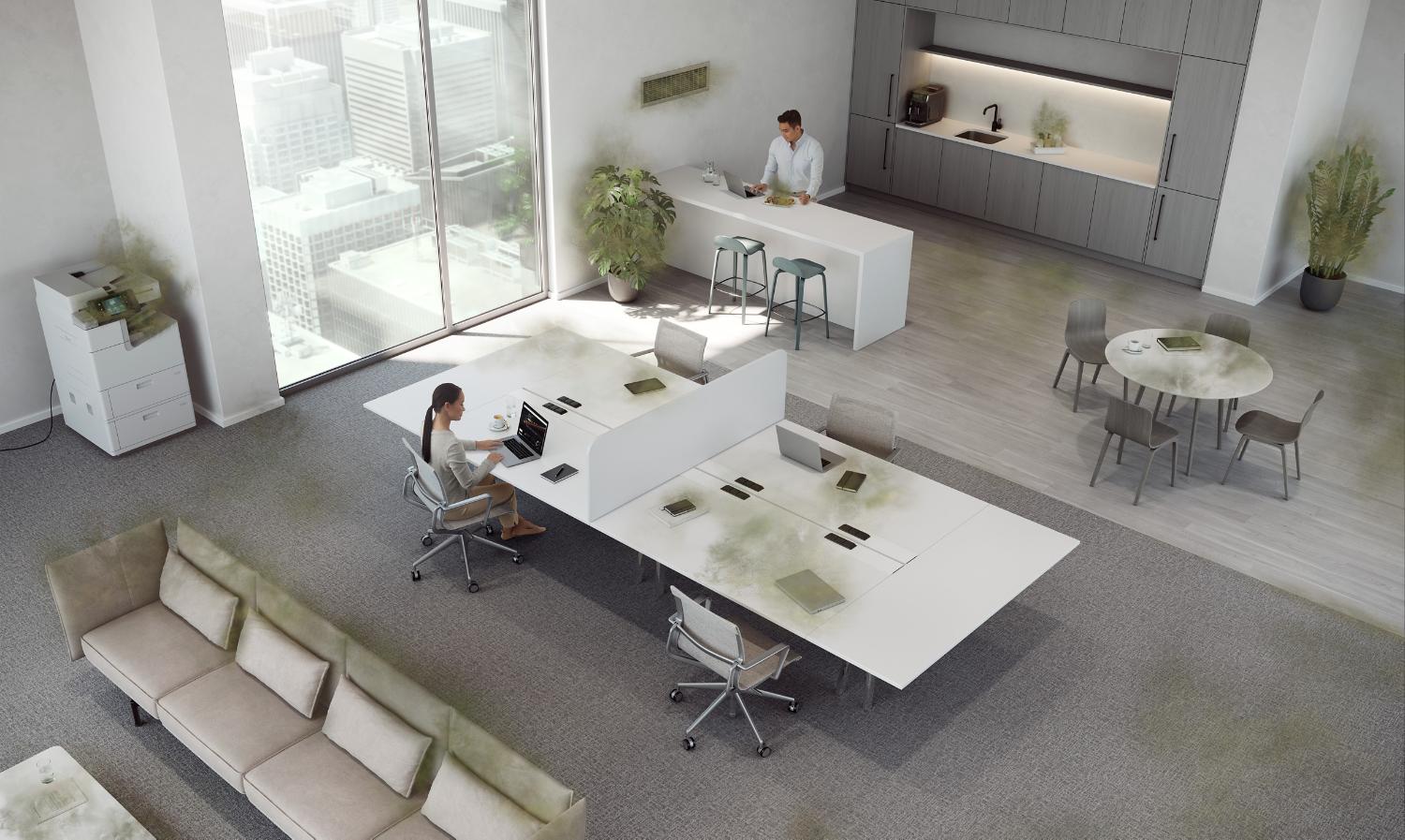The UK’s Clean Air Zones could deliver an 18% reduction in NO₂ caused by outdoor pollution.¹ But what about indoor air pollution? Surprisingly, it can be up to 5x more polluted.²
Every time you enter a Clean Air Zone (CAZ), you should be aware that the air you’re breathing is either below – or in danger of falling below – World Health Organization (WHO) standards. Traffic fumes are, of course, a major source of that pollution. But everyday activities, such as industrial processes, energy generation and heating are all playing their part in releasing particulate matter (PM) and gases into the air.

Although there’s a growing awareness that almost all of us are breathing in concerning levels of outdoor pollution,3 few of us realise that the concentration of certain pollutants can be up to five times higher indoors.2 This means that shared spaces within CAZs – offices, schools, hospitals, gyms and hotels – may contain dirtier air than outside, unless they’re properly ventilated with purified air.
The importance of clean indoor air
Studies have shown that good ventilation is associated with improved health, better concentration, higher levels of satisfaction with an environment, lower rates of absence from work, better quality of sleep, and reduced exposure to a wide range of air pollutants.4
While Professor Catherine Noakes from Leeds University told The Guardian that “poor air quality affected productivity, school test scores and sleep quality, as well as asthma and infectious diseases”. 5
Indoor air quality needs to be talked about far more than it is
Professor Chris Whitty in the Chief Medical Officer’s Annual Report 2022 said “Most of our days are spent indoors whether for work, study or leisure, yet indoor air quality has been studied much less than outdoors. (…) People in public buildings are exposed to air pollution but can do little about it, so society needs to act. A better understanding of how we can prevent and reduce indoor air pollution should now be a priority.”6
Despite most people spending 80% to 90% of their time inside,7 indoor air quality has been largely overlooked. How many of us really think about the air we’re breathing in a shared space? Gyms, for example, are supposed to be sanctuaries of healthfulness. But in a study with Bath Rugby club, Dyson discovered that indoor pollution peaked to the highest point when players were training in the gym.8 This is particularly concerning, as when we work out, we breathe faster and deeper, taking in greater volumes of air and, therefore, a higher dosage of pollution.
The smaller the particle, the bigger the problem
Monitoring air quality is all about turning the invisible into the visible. It might come as a surprise, but we take 17,000 to 30,000 breaths a day, and each breath draws five million to 50 million pollutant particles into our lungs. Some, like PM2.5 are 2.5 microns in diameter. According to Professor Frank Kelly of Imperial College London, they’re so small that 30 of them will span the width of just one human hair. We breathe them in and they accumulate deep in our lungs.

Then there are even smaller ultrafine particles – PM0.1 – which are so invisible that, when inhaled, they can penetrate the bloodstream and potentially access our organs.
The hidden air pollution inside shared spaces
Indoor air is a cocktail of pollutants. Some, like NO2 and particulate matter – PM0.1, PM2.5 and PM10 – come from the outdoors on clothes, and through cracks, windows, doors and mechanical ventilation. While others are generated from within.

Volatile organic compounds (VOCs), including formaldehyde, can be emitted by a wide array of everyday indoor sources, like office printers, cleaning and personal care products, certain furnishings and fuel burners. They can affect productivity, cognitive learning and concentration, as well as irritate the eyes, nose and throat. Long-term exposure to high concentrations of VOCs and formaldehyde can cause dizziness, headaches, nausea, shortness of breath, wheezing, skin problems and asthma. What's more, people with respiratory conditions are likely to be more sensitive.
Mould is another common problem in shared spaces. Its spores can irritate the skin, nose and throat, and cause shortness of breath in people with or without allergies. Dust mite droppings and body fragments in bedding, mattresses, upholstered furniture, carpets and curtains are also a major trigger for people with asthma, eczema and perennial allergic rhinitis.
Then, of course, there’s pollen (PM10). It accumulates in shared spaces, hanging around until its cleaned away, purified or breathed in. It creates the all-too-familiar discomfort of hay fever, reaching a peak concentration a long time after pollination season.
Peace of mind from purified air
While people are becoming more aware of the importance of indoor air quality, changing standards take time. Meanwhile immediate steps can be taken to improve indoor air quality through purification – by capturing pollutants and projecting cleaner air around rooms. This is an investment but one that will pay off in terms of wellbeing and productivity for all of us breathing air in shared spaces.
1 World Economic
2 Hulin et al, 'Respiratory health and indoor air pollutants based on quantitative exposure assessments', European Respiratory Journal, October 2012
3 www.addresspollution.org – the most detailed map of dirty air to date
4 www.hse.gov.uk/ventilation/overview.htm
5 www.theguardian.com/environment/2023/feb/08/indoor-air-quality-should-be-monitored-in-public-places-says-chris-whitty


